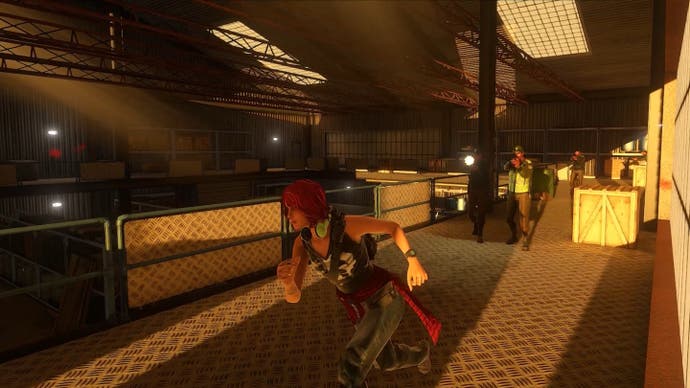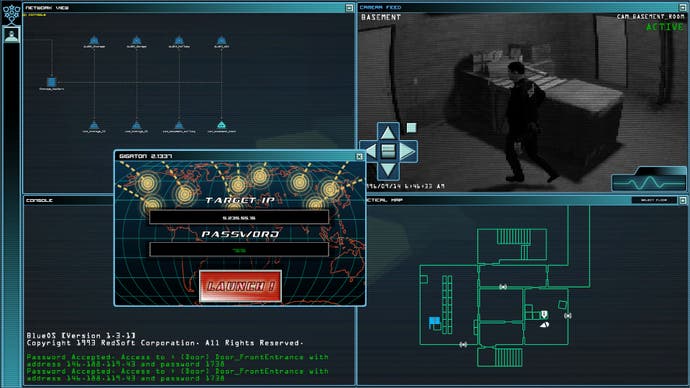Clandestine is a thrilling spy-'em-up, but you'll need a friend
Hack to basics.
Spy movies have understood asymmetrical co-operation for ages. That's a complicated way of saying that they have found the beauty, the thrill, in one person opening a door remotely so that another may move through it.
This is the thrust of Clandestine, too, an espionage game that's currently chugging along in Early Access. Clandestine is undeniably roughly hewn - and it's actually pretty expensive - but it also knows exactly what it's about. It's a co-op affair in which one person sneaks and another enables that sneaking. Open that door for me, take out that camera. Panic!
Philosophically, it reminds me of Uplink a little, the Introversion hacking game that felt uncommonly cinematic due to the fact it actually looked like a piece of utility software. Uplink was cinematic because it managed to put you in the movie - you and the computer you were tapping away at as you bugged and ran interference. Clandestine's a lot more of a traditional action game - if you're playing the spy role, anyway - but it still has that real-world thrill. It still makes you ask your accomplice to do your bidding, and then you see your requests enacted in the world on the screen.
Here's how it works. One player gets the traditional role. Playing alongside a developer the other day, that was me: I was a spy, sneaking through a warehouse, hugging cover, using the shadows, and popping up every now and then to headshot baddies with a silenced pistol. (Clandestine has a nice thing going with those headshots, incidentally. They're my favourite since Unit 13.)

All the while, though, the developer was watching my back. On his screen, he saw an overview of the landscape I was travelling through on foot, and he was able to warn me of patrols and duck in and out of spy cameras to get a more immediate sense of territory. He was also able to browse the local network, hacking into terminals to get me door keys and other passcodes, or to trigger hazards, zapping enemy agents from electrical outlets or scalding them with steam from a pipe. It's simple stuff, but when you allow yourself to be drawn into Clandestine's world, it works rather well.
A second mission saw us really clicking, in fact. We headed into a foreign embassy at night to investigate a murder scene: I approached in darkness, taking out lights while my colleague handled the cameras and tagged patrolling guards so that they'd show up on my display. There are gentle ripples of consequence in play throughout the game. Because I escaped detection in the first part of the level, an area that was off-limits and heavily monitored, I had an easier time of it later on, for example, traversing civilian spaces in which I could mingle with crowds - as long as I had stowed my gun. Equally, this isn't one of those stealth games where you can leave dead bodies around with no fear of discovery - but the bodies you leave behind can be used to lure guards into traps. As can pagers, which you can chuck about, and then ask your hacking backup to trigger.

When you're in sync like this, Clandestine really is something special. You see past the slightly ropey graphics and the basic staging, and you see a small team working to a very specific objective. This is a class-based multiplayer game in the truest sense, too: I worry that there might never be enough hackers to support all the spies out there, and I gather that the audience for the game tends to settle into a preferred role quite quickly and then stick with it.
If you're after single-player, you can switch back and forth between roles, but it feels like missing the point. I suspect a small number of people are going to love Clandestine, but I also suspect they're going to love it an awful lot. There are a lot of games about espionage, after all, but most of them don't really get it. They don't get that one person opens the door, and another goes through it. They don't get the simple thrill of that.

